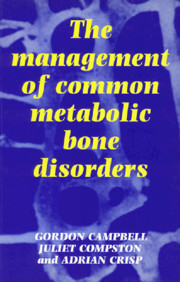4 - Paget's disease
Published online by Cambridge University Press: 06 July 2010
Summary
Introduction and epidemiology
On 14 November 1876, Sir James Paget, a surgeon of St Bartholomew's Hospital, delivered the first comprehensive account of osteitis deformans, the name which is still curiously preferred by Index Medicus, to the Medical and Chirurgical Society of London. Paget's disease is a chronic non-inflammatory disorder characterised by accelerated resorption and production of bone, resulting in deformity and fragility and, in Paget's own phrase, by ‘change of size, shape and direction’.
The disease rarely presents before the age of 40. The rare condition, idiopathic hyperphosphatasia (sometimes called juvenile Paget's) is characterised by bone deformity in childhood and a likely recessive inheritance and is probably unrelated to adult Paget's disease. Autopsy studies suggest that its prevalence approximately doubles with each decade after the age of 50 and may affect more than 10% of our population over the age of 95. The most comprehensive surveys were based on limited skeletal surveys of radiographs on hospital inpatients and one might very reasonably conclude that these results underestimate the prevalence of Paget's disease. William Barker conducted a survey of British patients of 55 years and over in 31 towns and concluded that 4–5% had Paget's disease with a focus in Lancashire of 7–8% (Fig. 4.1). There are likely to be almost a million people in Britain with Paget's disease.
About 10–30% of patients have a single Pagetic lesion (monostotic disease) and the rest polyostotic disease.
- Type
- Chapter
- Information
- The Management of Common Metabolic Bone Disorders , pp. 83 - 114Publisher: Cambridge University PressPrint publication year: 1993



